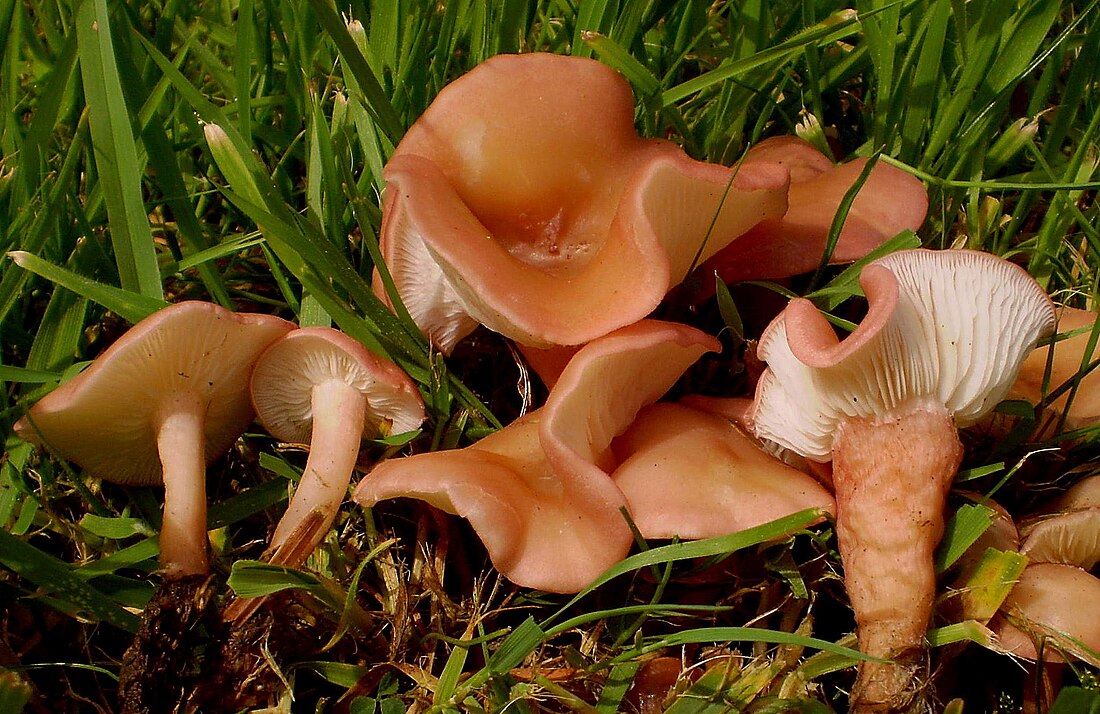Top Qs
Timeline
Chat
Perspective
Calocybe carnea
Species of fungus From Wikipedia, the free encyclopedia
Remove ads
Calocybe carnea is a species of fungus in the family Lyophyllaceae. It has small pink-capped mushrooms with white gills and can be found in grassy meadows, fields, or on lawns from spring to autumn in Europe and North America. Its common names include pink fairhead[1] and pink domecap.[2]
Remove ads
Taxonomy
Originally described as Agaricus carneus by the French mycologist Pierre Bulliard in 1792, this small pink mushroom has been through many taxonomical name changes over many years, and as a result has had many binomial names. Its current specific epithet, carnea, is derived from the Latin for "flesh-coloured".[3] The genus name is derived from the Ancient Greek terms kalos "pretty", and cubos "head".[4]
Remove ads
Description
The cap is 1.5–4 cm (0.59–1.57 in) in diameter. It is usually pale pink, but can be darker, pinker, or redder. It usually fades with age. At first it is convex, but later flattens, and has a tendency to become wavy. It is smooth and dry. The stem is up to 4 cm (1.5 in) high and the same colour as the cap, and is smooth, or finely fibrillose;[5] often narrowing towards the base, and often misshapen. The gills are adnexed to almost free; sometimes notched and are white, giving a spore print of the same colour. They are quite closely spaced initially. The flesh is thin and whitish,[5] with little odour or flavour.
Similar species
A similar species, Rugosomyces persicolor (Fr.) Singer, grows in tufts, has a liking for manured ground and is sometimes recorded as a variety or variant of C. carnea.
Remove ads
Distribution and habitat
Calocybe carnea appears in spring, summer, and early autumn (usually after rain). It is frequent in Britain, Europe, Asia, and North America, growing in grassy meadows and fields and on lawns. It is very rarely found in woods, unless a grassy clearing is present. It seems to tolerate agricultural practices, because its fruiting bodies often appear on fertilized farmland.[1]
Edibility
This mushroom is edible,[6] but is unsubstantial, as it is small and thin fleshed. It is also potentially confused with poisonous species.[5]
References
Wikiwand - on
Seamless Wikipedia browsing. On steroids.
Remove ads

